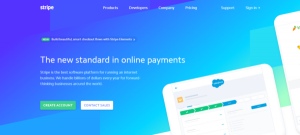Don’t let Amazon get the best of you this year. Start planning now! Columnist Mike Sands reveals strategies to keep in mind when preparing for the biggest shopping days of the year.

It’s that time again. Time for retailers to rally their troops for the end-of-year holiday shopping season, getting strategies and technologies locked in for the critical period that will drive nearly 20 percent of annual retail industry sales. What should retailers plan in 2016?
Forecasts so far offer some not-so-great news and some good news. The unfortunate news is that total retail holiday sales are expected to be virtually flat this year, increasing just 1.8 percent, according to eMarketer predictions. The good news for digital marketers is that e-commerce sales are anticipated to increase 13.3 percent over 2015 figures, showing that there are dollars to be won in the online world.
But when competing for e-commerce dollars, there’s one factor that can’t be ignored: the online megabeast, Amazon.
The challenge Amazon presents to other retailers, especially around the holidays, is perhaps best summed up by Tim Walters in a report (email registration required) by Digital Clarity and Signal (my company):
Amazon is like an irritating distant relative that shows up for Thanksgiving dinner, hoards the best parts of the turkey, controls the conversation, and refuses to leave.
Walters’ opinion is spot-on about what Amazon has accomplished:
- The company steamrolled the competition during last year’s holiday season as the most-visited retail website in December.
- Internet users say Amazon is the No. 1 place where they begin holiday shopping when they don’t have a gift idea in mind — beating out other retailers’ websites and physical stores combined.
- The e-commerce giant is the primary holiday gift destination for 42 percent of US consumers, according to data released this week by Signal.
Amazon dominates every aspect of retail, from initial consideration through research, from purchase to delivery. But retailers have a secret weapon that will help them deliver stellar digital experiences this holiday season: their own customer data.
The wealth of knowledge available in first-party data gives retailers the edge they need to delight holiday shoppers. By using data to understand better than anyone else what their customers want and need, retailers can deliver data-driven relevance, personalized marketing and simple, seamless experiences — increasing the chances of making the sale over a competitor.
Here are three strategies for delivering superior, data-driven experiences that retailers should consider as they plan for the holiday season.
1. Use data to know your customers better than anyone else
Just because Amazon is popular with a lot of people doesn’t mean it’s everyone’s go-to online holiday shop. Retailers have plenty of opportunities to capture holiday dollars, as a significant number of consumers — 40 percent — say it’s not their primary holiday shopping destination.
What do those consumers want instead? Retailers can use their first-party data to find out, as their own customer insight is oftentimes deeper than what Amazon has access to when considering sources like sales, customer service, loyalty programs, marketing and promotions and interactions with store associates, as well as pertinent non-customer data such as inventory levels, shipping and supply chain.
When all of this data is collected and connected into rich, deep profiles, retailers can recognize their customers across devices to understand them better than any competitor and respond accordingly.
Take, for example, Amazon’s much-touted recommendations and associated offers, which actually aren’t very intelligent. Besides asking if a product should be gift-wrapped, Amazon has little way of knowing whether it was purchased for the buyer or someone else, and subsequent recommendations can be far off the mark.
Retailers can up the ante by taking advantage of their extensive customer data from all channels to top Amazon with more relevant and intelligent suggestions.
2. Deliver omnichannel experiences to make shoppers’ lives easier
Consumers don’t think in channels, and retailers shouldn’t, either. Gone are the days when holiday shoppers had to choose between the convenience of buying online from home versus the assurance of handling the product in a store. Now they can do it all — and they leave a rich trail of data every step along the way.
Consider these stats:
- Consumers say they browse for holiday purchases most frequently on their desktops/laptops (36 percent), but the most frequent way they purchase gifts is in stores (33 percent).
- Plus, about one in five consumers primarily browse for holiday purchases via mobile devices (smartphones and tablets), but just eight percent use smartphones, and only seven percent use tablets as their primary way to actually make the purchase.
With the power of durable customer profiles, retailers can take real-time action on any of these touch points and devices to enable seamless shopping.
Holiday shoppers want highly personalized and genuinely helpful information everywhere they shop to make their lives easier during the busiest time of the year. Retailers with physical stores are especially well-positioned to provide this convenience. They can use stores as flexible warehouses to provide omnichannel shopping options like buy online and pick up in store, free shipping and easy returns — effectively serving customer needs and delivering the experiences they’ve come to expect.
3. Personalize digital advertising
The rise of ad blockers has been one of the most prevalent industry headlines over the past year. But the reality is that ads do work, when they’re relevant.
Our survey showed that many consumers — 43 percent — still say that digital advertising on websites or in mobile apps influences their holiday gift-buying. The key to breaking through with digital advertising is to personalize ads based on what’s known about the customer and take action as soon as they are in market.
Addressable media, which helps brands recognize customers as people, not impressions or cookies, takes digital advertising efforts to the next level. For example, the one-third of consumers who said that ads help them get discounts or deals should be served ads that alert them to specials.
Or the 27 percent who report that ads provide them with new gift ideas should be delivered advertising about new products. And, because 48 percent of people surveyed also said that digital ads are annoying, make sure that the ads are served at the right moment — not after the customer has already made a purchase.
Retailers need to up the digital ante when planning for the 2016 holiday season, and all that really matters is serving the customer’s needs with relevancy. In fact, 46 percent of consumers surveyed said that relevant deals and discounts will motivate them to buy this holiday season.
The power to deliver that relevancy lies within retailers’ own data. With this secret sauce, they can gain a truly comprehensive customer understanding that provides not just personalized offers or content, but also assistance, understanding and purpose.
Some opinions expressed in this article may be those of a guest author and not necessarily Marketing Land. Staff authors are listed here.
Marketing Land – Internet Marketing News, Strategies & Tips
(27)







